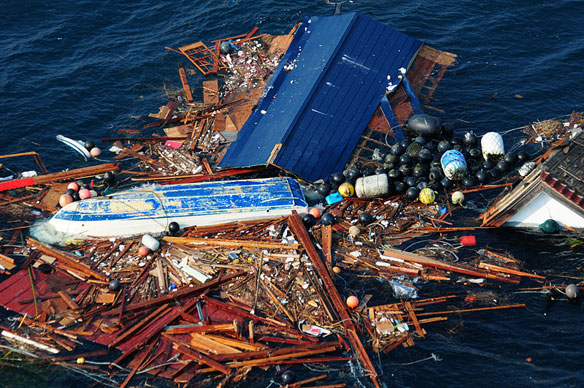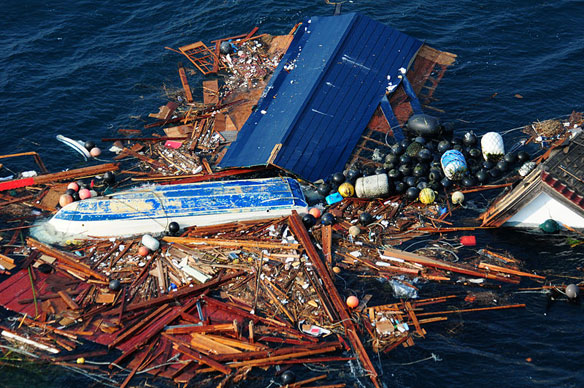By NOAA
Of all Earth’s natural hazards, tsunamis may be among the most infrequent, but they pose a major threat to coastal populations, particularly in the seismically active Pacific Ocean.
The tragedy of the March 2011 tsunami in Japan had far-reaching effects that included the U.S. West Coast and Hawaii.
As the tsunami receded from land, it washed much of what was in the inundation zone into the ocean. Heavier materials sank closer to shore while the buoyant materials went on to make up the debris fields we have seen in satellite imagery and aerial photos of the waters surrounding Japan.
Following are information and answers to some frequently asked questions about the marine debris generated from the tsunami in Japan: Frequently Asked Questions: Japan Tsunami Marine Debris, NOAA
Russian Ship Finds Tsunami Debris where Scientists Predicted, by International Pacific Research Center, University of Hawaii
Ever since the great Japan tsunami on March 11 washed millions of tons of debris into the Pacific, scientists at the International Pacific Research Center, University of Hawaii at Manoa, have been trying to track the trajectory of this debris that can threaten small ships and coastlines. For nearly half a year, Senior Researcher Nikolai Maximenko and Computer Programmer Jan Hafner had only their state-of-the-art, but still untested, computer model of currents to speculate where the debris might end up. Now valuable sightings of the debris are reported from places where the model predicted.
Warned by maps of the scientists’ model, the Russian sail training ship, the STS Pallada, found
an array of unmistakable tsunami debris on its homeward voyage from Honolulu to Vladivostok.
Up To 20 Million Tons Of Debris From Japan’s Tsunami Moving Toward Hawaii










